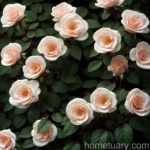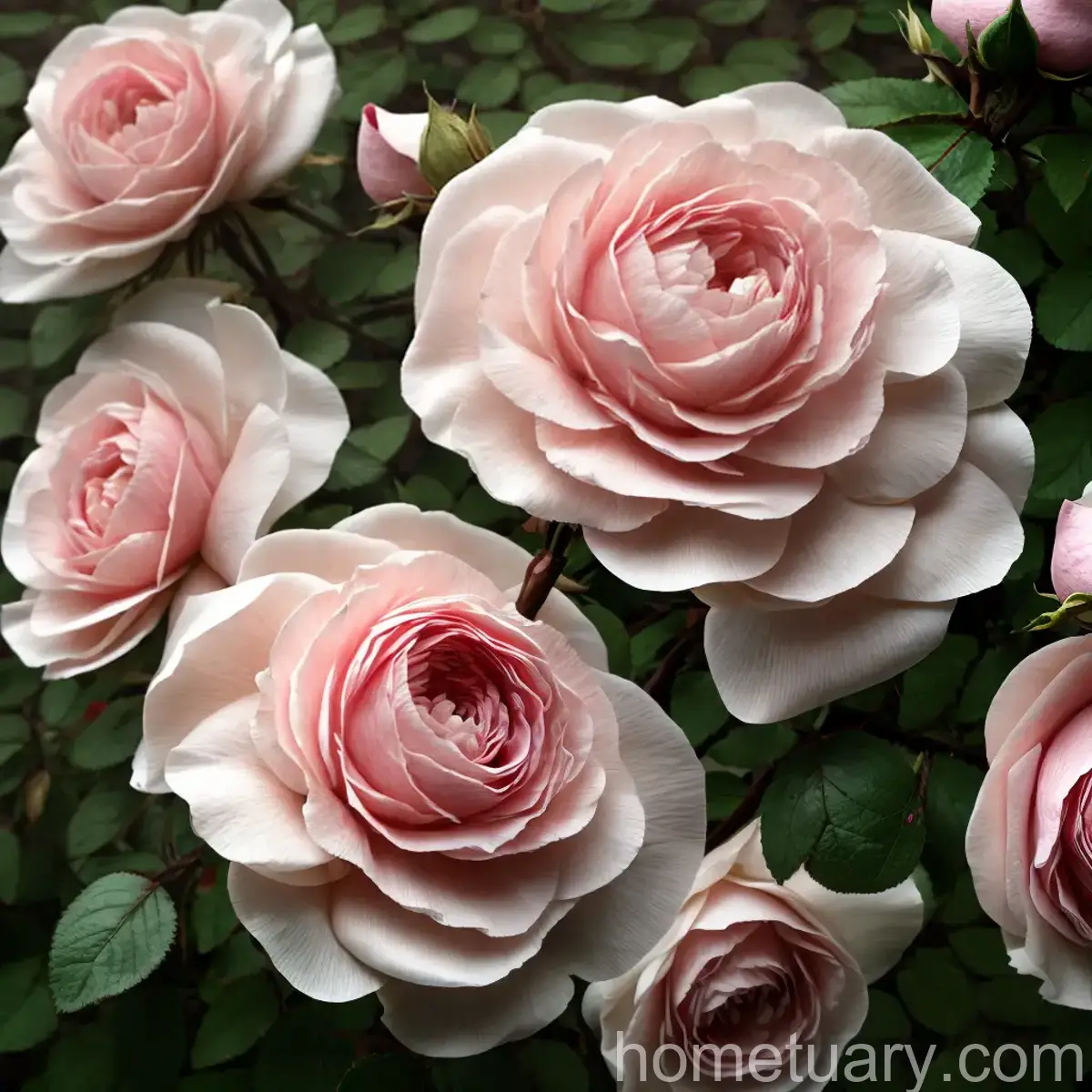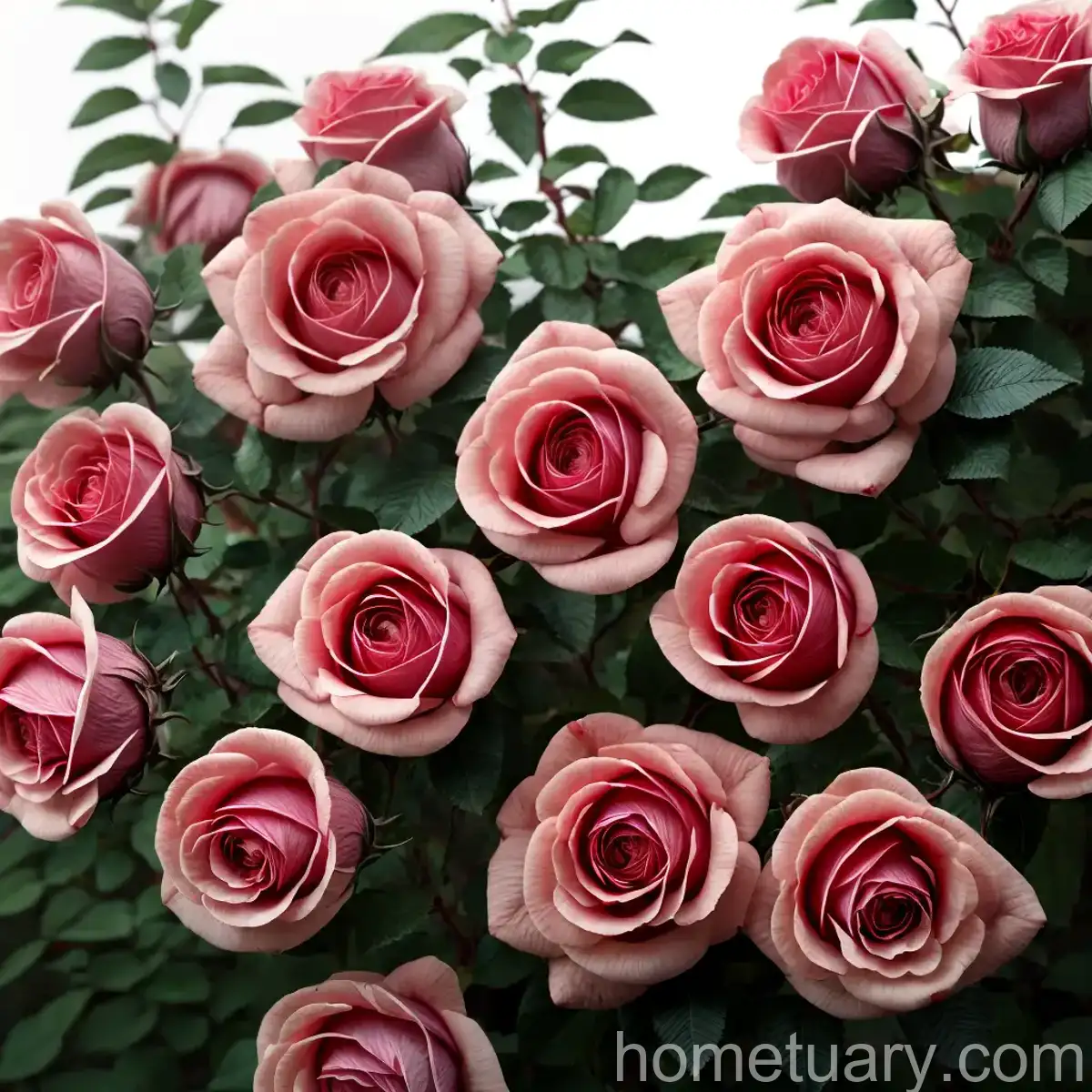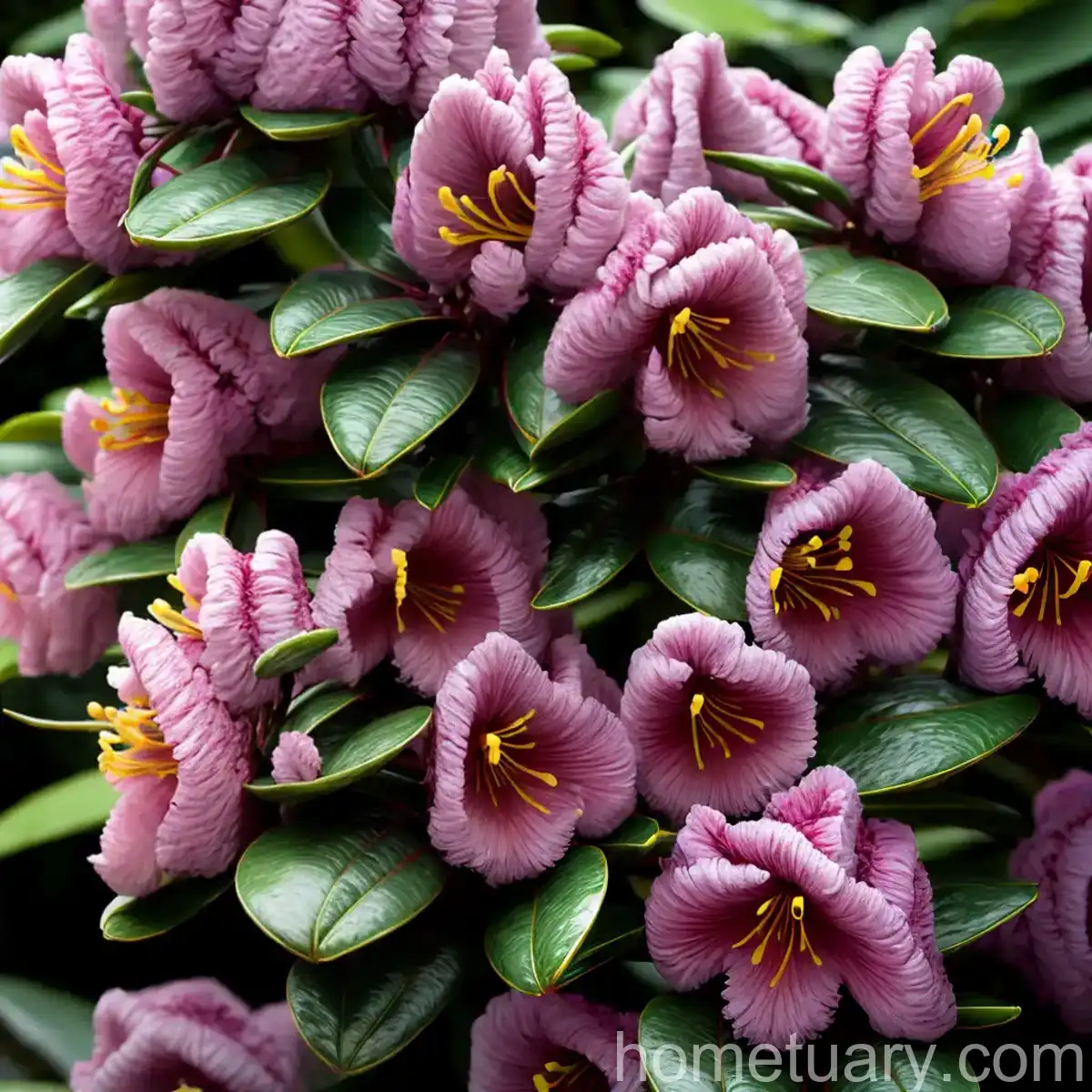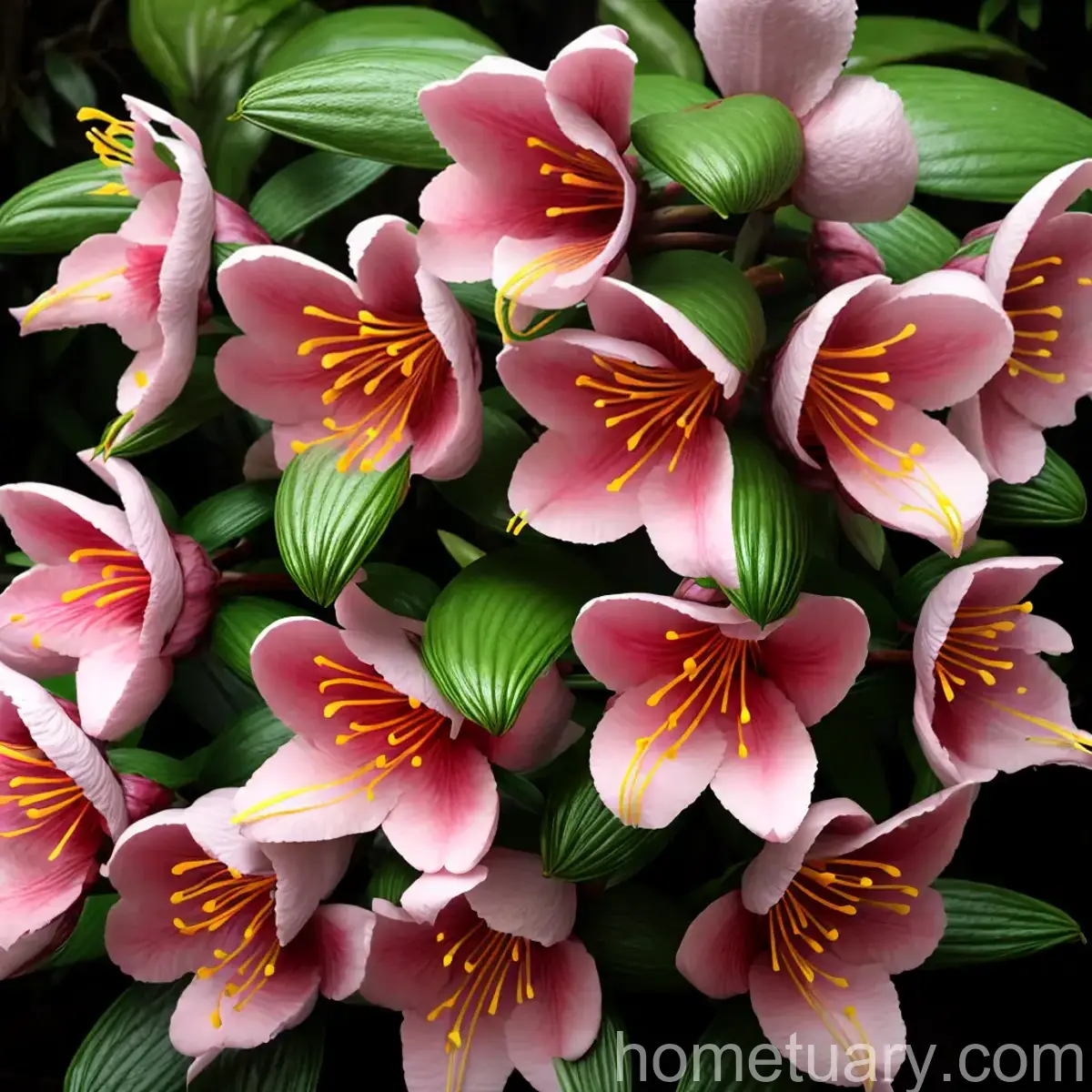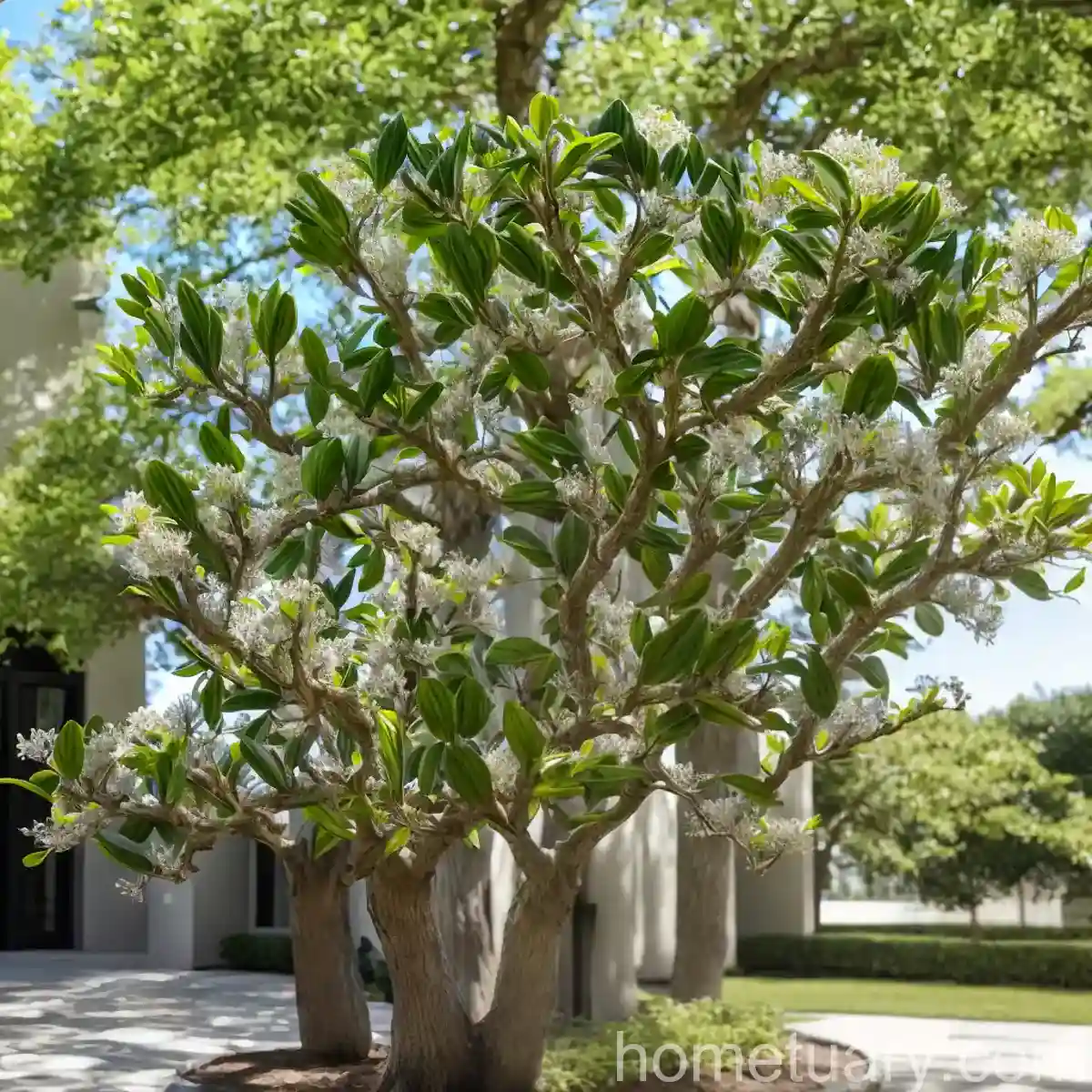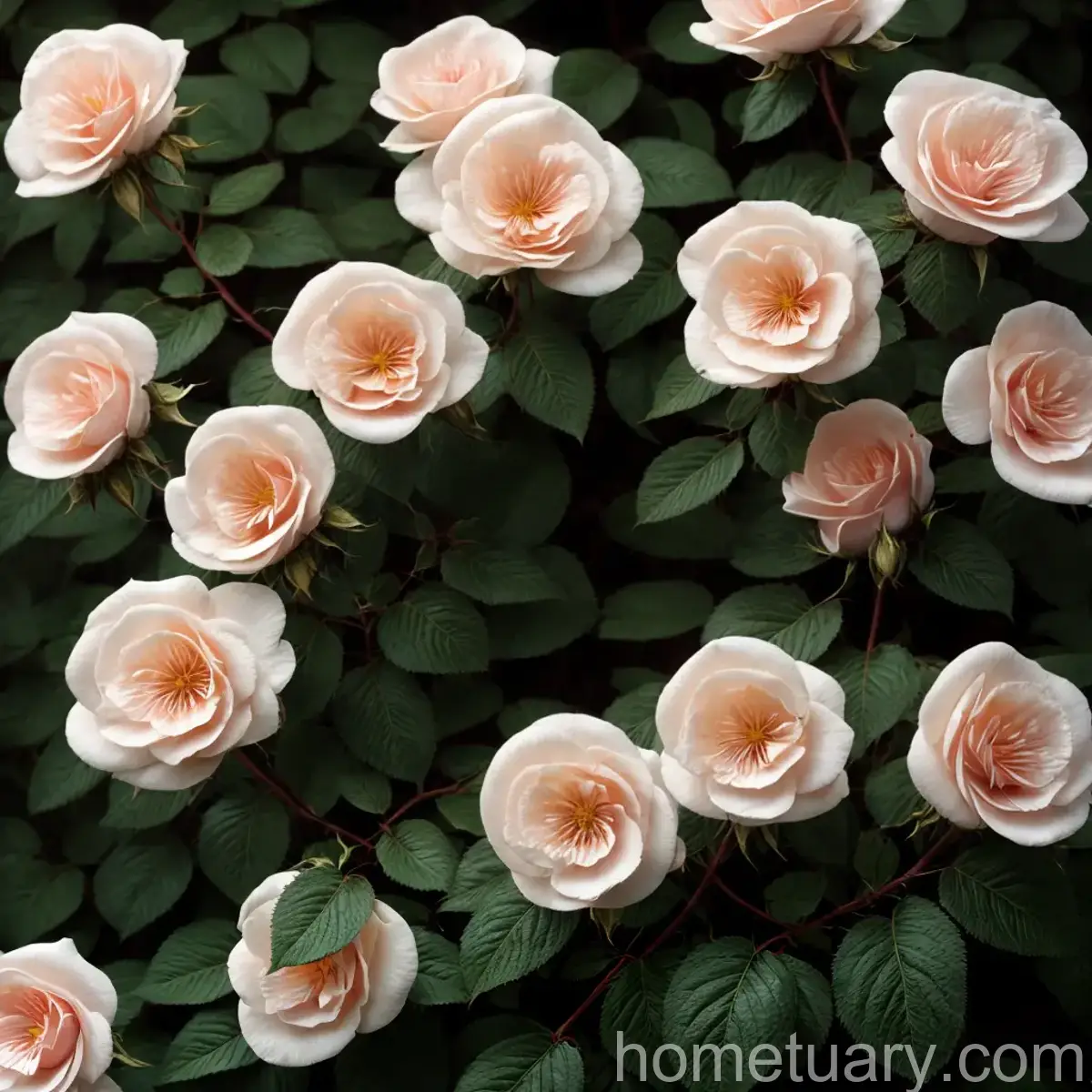Kordesii Rose (Rosa ‘Champlain’): The Complete Guide
What is a Kordesii Rose (Rosa ‘Champlain’)?
Rosa ‘Champlain’, commonly known as the Kordesii rose, is a stunning flowering shrub that belongs to the Rosa genus within the Rosaceae family. This hybrid rose cultivar is renowned for its exceptional disease resistance, making it a popular choice among gardeners and landscapers. The Kordesii rose is a cross between two famous rose species, Rosa rugosa and Rosa kordesii, resulting in a plant that exhibits the best traits of both parents.
With its rich history and outstanding characteristics, the Kordesii rose has become a beloved addition to numerous gardens, parks, and landscapes. In this comprehensive guide, we will explore everything you need to know about the Rosa ‘Champlain’, from its cultural requirements and uses to its propagation methods and disease resistances.
Key Takeaways – Kordesii Rose (Rosa ‘Champlain’)
Before delving into the detailed care and cultivation of the Kordesii rose, let’s take a quick look at the key takeaways:
- Description: A brief overview of the physical and botanical characteristics of the Rosa ‘Champlain’.
- Varieties: Exploration of different Kordesii rose varieties and their unique attributes.
- Care Tips: Essential guidelines for maintaining and nurturing Kordesii roses.
- Characteristics: In-depth understanding of the distinctive features of the Rosa ‘Champlain’.
- Propagation: Insights into the various methods for propagating Kordesii roses.
- Benefits: The advantages of planting and incorporating Rosa ‘Champlain’ in gardens and landscapes.
- Pruning: Tips and techniques for effectively pruning Kordesii roses to promote healthy growth and abundant flowering.
- Disease Resistance: The natural ability of the Kordesii rose to withstand and combat diseases.
- Soil Requirements: Information on the best soil conditions for growing healthy Rosa ‘Champlain’ plants.
- Companion Planting: Suggestions for suitable companion plants that complement Kordesii roses.
- Pollinator Attraction: How the Kordesii rose can attract and support pollinators in the garden.
- Fragrance: A look into the delightful fragrance emitted by Rosa ‘Champlain’ blooms.
- Container Gardening: Tips and considerations for growing Kordesii roses in containers.
- Common Pests: Identification of typical pests that may affect the health of Kordesii roses.
- Sun Exposure: Understanding the importance of sunlight for optimum growth of the Rosa ‘Champlain’.
- Organic Care: Implementing natural and organic methods for caring for Kordesii roses.
With these key takeaways in mind, let’s explore the world of Kordesii roses and uncover the secrets of successfully cultivating and enjoying the beauty of Rosa ‘Champlain’ in various settings.
Rosa ‘Champlain’ Description
Rosa ‘Champlain’ represents a captivating blend of elegance, vigor, and practicality, making it an enticing option for both seasoned gardeners and beginners. Let’s begin by examining the description of this remarkable rose cultivar.
Physical Characteristics
The Kordesii rose, also known as Rosa ‘Champlain’, is revered for its exquisite beauty and sturdy growth habit. Here are some of its notable physical traits:
- Flowers: The flowers of Rosa ‘Champlain’ are visually striking, featuring rich, deep red petals that captivate the eye. The blooms are semi-double, exuding an aura of classic charm and elegance.
- Foliage: The foliage of the Kordesii rose is lush and abundant, with deep green leaves that provide an attractive backdrop to the vibrant flowers.
- Growth Habit: This robust shrub typically exhibits an upright, bushy growth habit, reaching a height of around 3-4 feet and a spread of 2-3 feet. Its compact nature makes it ideal for various landscaping applications, including borders, hedges, and mixed perennial beds.
Botanical Attributes
From a botanical perspective, Rosa ‘Champlain’ showcases a range of characteristics that contribute to its overall appeal and desirability:
- Genus and Family: Belonging to the Rosa genus within the extensive Rosaceae family, the Kordesii rose shares its lineage with a wide array of other popular ornamental plants, fruits, and ornamental trees.
- Hybrid Origin: The origins of the Rosa ‘Champlain’ can be traced to a successful hybridization process, culminating in a plant that reflects the best traits of its parent species, Rosa rugosa and Rosa kordesii.
- Hardiness Zone: Kordesii roses are well-suited to a range of hardiness zones, offering adaptability and resilience in diverse climatic conditions. They typically thrive in USDA hardiness zones 3-9, although local microclimates may also influence their performance.
Kordesii Rose Varieties
The Kordesii rose group encompasses several captivating varieties, each with its own distinct attributes and visual appeal. Let’s explore some notable Kordesii rose varieties that have captivated the hearts of gardeners and enthusiasts worldwide:
| Variety | Description |
|---|---|
| Rosa ‘Champlain’ | The classic, deep red blooms of this variety make it a perennial favorite in gardens. |
| Rosa ‘Robusta’ | Renowned for its robust growth and resilient nature, producing clusters of vibrant blooms. |
| Rosa ‘Ferdinand Pichard’ | A striking variety with unique striped petals and an enchanting fragrance. |
| Rosa ‘Max Graf’ | A hardy and vigorous cultivar, bearing large, fully double flowers in shades of pink. |
These are just a few examples of the diverse and captivating Kordesii rose varieties available to gardeners. Each variety brings its own distinct charm and characteristics, adding variety and allure to garden landscapes.
Kordesii Rose Care Tips
Caring for Kordesii roses involves a combination of attentive maintenance and strategic cultivation practices. By understanding and implementing the following care tips, you can ensure that your Rosa ‘Champlain’ thrives and flourishes in your garden or landscape setting:
Water
-
Regular Watering: Kordesii roses benefit from consistent watering, especially during dry spells and periods of active growth. Ensure that the plants receive sufficient moisture without becoming waterlogged, as excessively wet soils can lead to root rot and other issues.
-
Deep Watering: When watering Kordesii roses, aim to provide deep, thorough irrigation that encourages healthy root development. Deep watering promotes strong, resilient root systems that can better withstand environmental stresses.
-
Mulching: Applying a layer of organic mulch around the base of Kordesii roses can help retain soil moisture, suppress weed growth, and regulate soil temperature. Mulching also contributes to the overall health of the plant by enhancing soil structure and promoting microbial activity.
Sunlight
-
Full Sun Exposure: Kordesii roses thrive in locations that receive ample sunlight, ideally at least 6-8 hours of direct sun per day. Adequate sunlight is essential for promoting robust growth, profuse flowering, and vibrant foliage.
-
Site Selection: When planting Kordesii roses, choose a well-drained location that offers full sun exposure and good air circulation. Avoid areas with excessive shade or competition from large trees or shrubs, as these conditions can hinder the plant’s growth and flowering.
-
Morning Sun: In regions with hot summer climates, consider providing Kordesii roses with morning sun and partial shade during the intense midday and afternoon hours. This helps protect the plants from potential heat stress while still allowing them to benefit from valuable sunlight.
Fertilizer
-
Balanced Fertilization: Apply a balanced fertilizer specifically formulated for roses to provide essential nutrients for healthy growth and flowering. Look for a fertilizer with a balanced NPK ratio, as well as micronutrients such as iron, manganese, and magnesium.
-
Feeding Schedule: Feed Kordesii roses in early spring as new growth begins, and again in late spring or early summer to support the development of flower buds. Avoid excessive fertilization, as this can lead to excessive vegetative growth at the expense of flowering.
-
Organic Options: Consider incorporating organic fertilizers, such as compost, well-rotted manure, or organic rose food, to nourish Kordesii roses while promoting soil health and sustainability.
Soil
-
Well-Drained Soil: Kordesii roses thrive in well-drained, fertile soil that provides a healthy growing environment for their roots. Amend heavy clay soils with organic matter to improve drainage and aeration.
-
pH Levels: Aim for slightly acidic to neutral soil pH, ideally in the range of 6.0-7.0, to support optimal nutrient uptake and microbial activity. Conduct a soil test to assess the pH and adjust it as needed with the addition of lime or sulfur.
-
Soil Preparation: Prior to planting Kordesii roses, prepare the soil by loosening it to a depth of at least 12 inches and incorporating organic matter such as compost or aged manure. This creates a favorable substrate for the establishment and growth of the plants.
Pruning
-
Annual Pruning: Regular pruning is essential for maintaining the health, shape, and vitality of Kordesii roses. Perform annual pruning in late winter or early spring, before new growth emerges, to remove dead or damaged wood and promote vigorous, well-structured growth.
-
Deadheading: Remove spent blooms throughout the growing season to encourage continuous flowering and prevent the formation of rose hips. Deadheading redirects the plant’s energy into producing new blossoms, prolonging the blooming period.
-
Pruning Techniques: Use sharp, clean pruning shears to make angled cuts just above a set of healthy, outward-facing buds. Trim back any crossing or overcrowded branches to improve air circulation and reduce the risk of disease.
Propagation
-
Propagation Methods: Kordesii roses can be propagated through a variety of methods, including stem cuttings, layering, and grafting. Each method offers unique advantages and challenges, allowing gardeners to propagate new plants and expand their collection of Kordesii roses.
-
Timing: For best results, propagate Kordesii roses in late spring or early summer when the plants are actively growing and capable of rapidly establishing new roots.
-
Rooting Hormone: When propagating from stem cuttings, consider using a rooting hormone to enhance the development of roots and improve the overall success rate of propagation.
These essential care tips form the foundation for nurturing healthy, resilient, and flourishing Kordesii roses. By attending to the specific needs of these captivating plants, you can create a vibrant and visually stunning garden or landscape that celebrates the timeless beauty of Rosa ‘Champlain’.
Benefits of Planting Rosa ‘Champlain’
Introducing Rosa ‘Champlain’ into your garden or landscape design offers an array of compelling benefits, ranging from its visual appeal and fragrance to its ecological contributions and practical uses. Let’s explore the numerous advantages of planting and incorporating the Kordesii rose into diverse settings:
-
Disease Resistance: One of the most notable benefits of planting Rosa ‘Champlain’ is its exceptional disease resistance, which significantly reduces the need for chemical treatments and interventions. By choosing a disease-resistant cultivar, gardeners can enjoy healthy, low-maintenance roses throughout the growing season.
-
Low-Maintenance: Kordesii roses are renowned for their low-maintenance nature, requiring minimal care and interventions to thrive. Their ability to withstand adverse conditions and resist diseases makes them an attractive option for gardeners seeking resilient, fuss-free plants.
-
Long Flowering Period: The profuse flowering habits of Rosa ‘Champlain’ ensure a prolonged and vibrant display of blooms, often extending from late spring into fall. This extended flowering period provides continuous visual interest and color in garden beds, borders, and containers.
-
Fragrance: Many Kordesii roses, including Rosa ‘Champlain’, boast delightful fragrances that fill the air with their sweet, intoxicating perfume. Their alluring scents make them valuable additions to gardens, patios, and outdoor seating areas, enhancing the sensory experience of the surrounding environment.
-
Pollinator Support: The nectar-rich blooms of Kordesii roses attract and support a variety of pollinators, including bees, butterflies, and other beneficial insects. By planting Rosa ‘Champlain’, gardeners can contribute to the overall health and biodiversity of their local ecosystems.
-
Aesthetic Value: With their rich, velvety blooms and lush, verdant foliage, Kordesii roses add unmatched aesthetic value to garden landscapes. Whether used as standalone specimens, borders, or mass plantings, these roses create an atmosphere of timeless elegance and natural beauty.
-
Versatile Uses: Kordesii roses can be used in a multitude of applications, including mixed shrub borders, hedging, foundation plantings, and container gardening. Their adaptability and versatility make them valuable additions to various landscape design styles and themes.
-
Historical Significance: Many Kordesii rose varieties, including Rosa ‘Champlain’, carry historical and horticultural significance, reflecting the efforts of breeders and hybridizers to create enduring, environmentally friendly plants with robust growth habits and exquisite beauty.
By harnessing the benefits of planting Rosa ‘Champlain’, gardeners and landscapers can enhance the appeal, sustainability, and biodiversity of their outdoor spaces while enjoying the timeless allure of these exceptional rose cultivars.
How to Propagate Kordesii Roses
Propagating Kordesii roses enables gardeners to expand their collection of these captivating plants, create new displays, and share their love of roses with friends and fellow enthusiasts. Several propagation methods offer opportunities to propagate new plants from existing Kordesii rose specimens:
Stem Cuttings
-
Selecting Cuttings: Choose healthy, disease-free stems from actively growing Kordesii rose plants, ideally from the current season’s growth. Select cuttings that are approximately 6-8 inches long and display several sets of leaves.
-
Preparing Cuttings: Use sharp, clean pruning shears to take the cuttings, making clean, angled cuts just below a leaf node. Remove the lower set of leaves to expose the nodes, which will promote the development of roots.
-
Rooting Medium: Dip the lower end of each cutting in a rooting hormone powder to encourage the formation of roots. Plant the cuttings in a well-draining, sterile rooting medium, such as a blend of perlite and peat moss, ensuring that at least two nodes are buried in the medium.
-
Moisture and Humidity: Keep the cuttings consistently moist and provide high humidity by covering them with a clear plastic bag or placing them in a propagator. This creates a conducive environment for root development and prevents excessive moisture loss.
-
Root Development: Monitor the cuttings regularly and watch for the emergence of new roots, typically within 4-6 weeks. Once the cuttings have developed a healthy root system, they can be carefully transplanted into individual pots or directly into the garden.
Layering
-
Selecting a Stem: Identify a healthy, flexible stem from a mature Kordesii rose plant that can be easily bent and positioned in contact with the soil.
-
Wounding the Stem: Make a small cut or incision on the underside of the selected stem, near a leaf node, to encourage the formation of roots. Apply a small amount of rooting hormone to the wounded area to stimulate root development.
-
Positioning and Anchoring: Gently bend the wounded portion of the stem toward the ground and secure it in place with a U-shaped wire or a small stone. The wounded section should make firm contact with the soil surface.
-
Root Formation: Over several weeks, the bent portion of the stem will develop new roots while still attached to the parent plant. Monitor the layered stem and water it regularly to support root establishment.
-
Separation and Transplanting: Once the layered stem has developed a sufficient root system, carefully detach it from the parent plant and transplant it to a new location or container. Provide ongoing care to ensure a successful transition.
Grafting
-
Selecting Rootstock: Choose a vigorous, disease-resistant rose variety to serve as the rootstock for the grafting process. This establishes a strong foundation for the grafted Kordesii rose to flourish.
-
Preparing the Scion: Select a healthy, desirable stem from the Rosa ‘Champlain’ plant to serve as the graft, ensuring that it displays robust growth and is free from diseases and pests.
-
Grafting Technique: Utilize a suitable grafting technique, such as T-budding or chip budding, to join the scion with the rootstock. Follow established guidelines for proper alignment and securing of the graft to promote successful union and integration.
-
Grafting Environment: Place the grafted rose in a protected, sheltered environment that provides optimal conditions for healing and recovery. Adequate moisture, warmth, and protection from direct sun and wind support the graft’s establishment.
-
Monitoring and Growth: Monitor the grafted rose carefully, observing signs of successful graft union and new growth. As the graft begins to grow and flourish, provide ongoing care to nurture its development and promote a healthy, resilient plant.
Each propagation method offers unique advantages and considerations, allowing gardeners to propagate Kordesii roses with confidence and success. By exploring these propagation techniques, you can expand your collection of Rosa ‘Champlain’ and create a diverse and captivating display of these exceptional rose cultivars.
Tips for Pruning Rosa ‘Champlain’
Pruning plays a crucial role in maintaining the health, vigor, and visual appeal of Kordesii roses, including the iconic Rosa ‘Champlain’. By following these tips and techniques for effective pruning, you can promote robust growth, abundant flowering, and long-term vitality in your Kordesii rose plants:
Pruning Timing
- Late Winter/Early Spring: As the dormant season draws to a close, plan to prune Kordesii roses in late winter or early spring before new growth commences. This timing allows for clean, precise cuts without risking damage to emerging buds and shoots.
Pruning Objectives
-
Remove Dead or Diseased Wood: Begin by inspecting the plant for any dead, damaged, or diseased wood, which should be promptly pruned away to prevent the spread of pathogens and promote healthy growth.
-
Shape and Structure: Use pruning to shape and structure the plant, promoting an open, airy growth habit that allows for good air circulation and sunlight penetration.
-
Encourage New Growth: By selectively pruning to remove spent blooms and older wood, you can encourage the development of new growth and subsequent flowering.
Pruning Techniques
-
Clean Cuts: Use sharp, clean pruning shears to make precise cuts just above a set of healthy, outward-facing buds. This encourages branching and outward growth, preventing the center of the plant from becoming congested and promoting better air circulation.
-
Angle of Cuts: Aim for a 45-degree angle when making pruning cuts, as this promotes efficient water runoff and prevents water from pooling on the cut surface.
-
Deadheading: Throughout the growing season, regularly deadhead spent blooms to encourage continuous flowering and prevent the formation of rose hips. Remove the entire spent flower, including the stem, and discard it.
-
Thinning and Shaping: As part of your pruning regimen, thin out any congested or crossing branches to open up the center of the plant and shape it according to your desired design.
-
**







